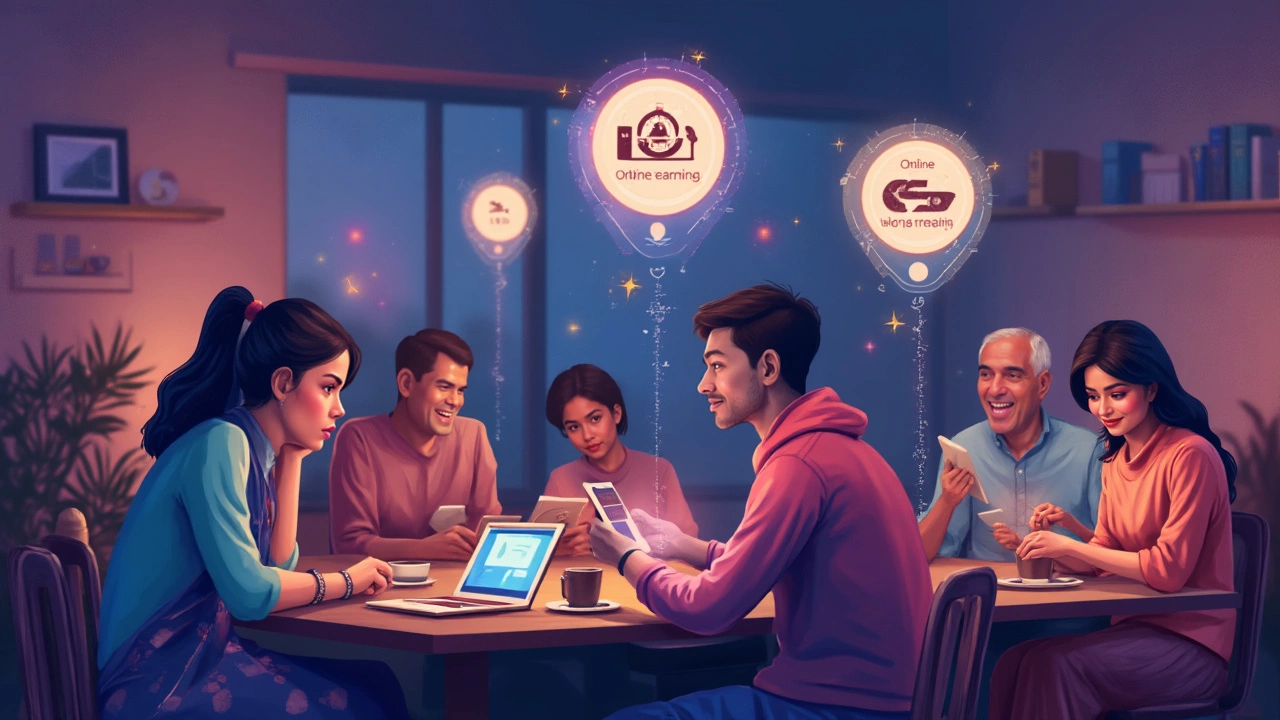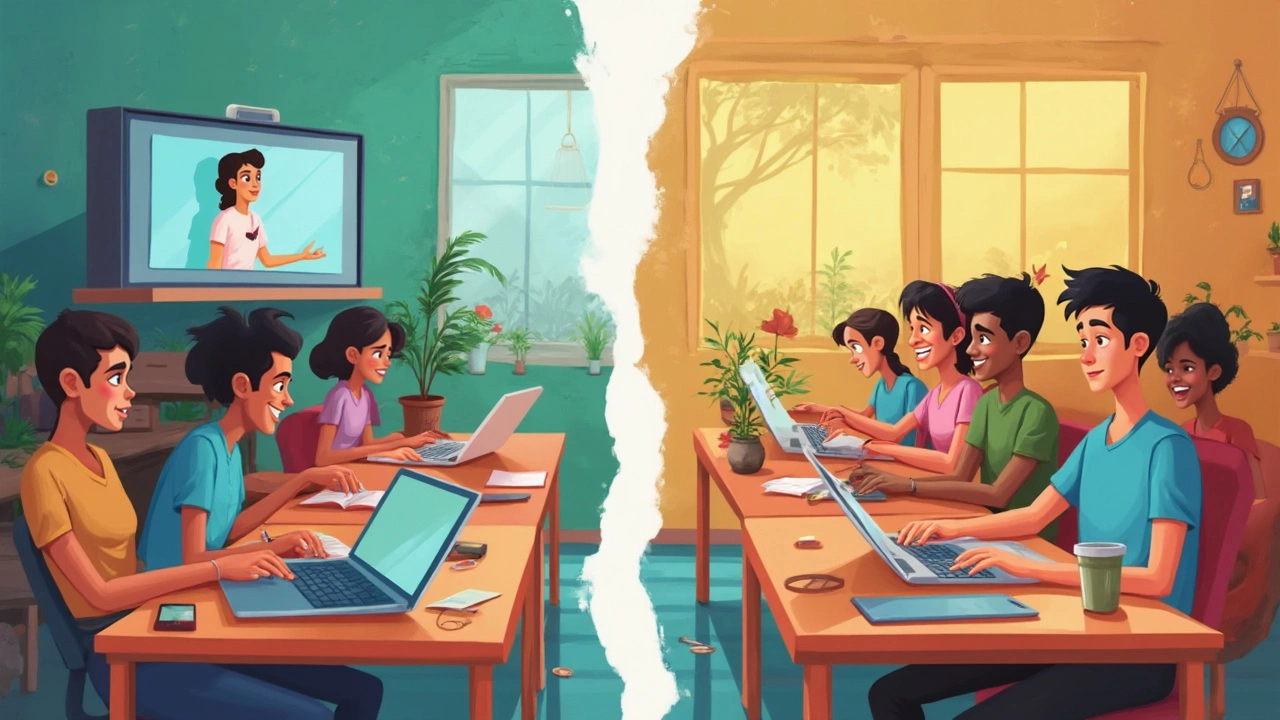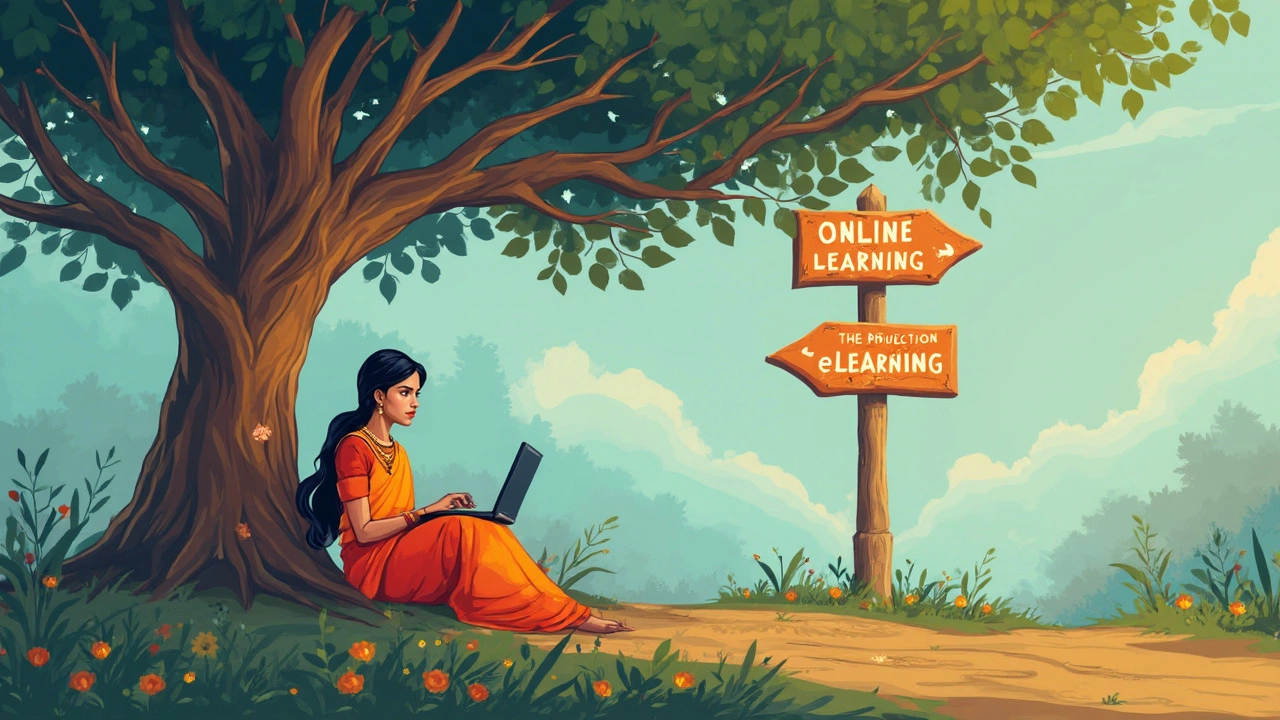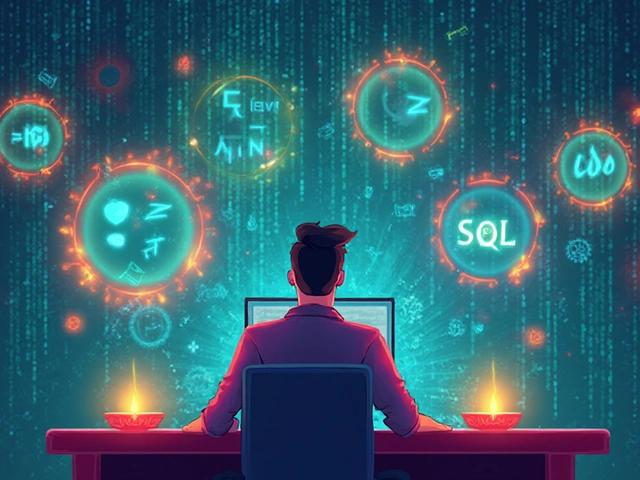
Ever noticed how people throw around 'online learning' and 'eLearning' like they're the same thing? Here’s the twist—they're not, at least not all the time. While both involve using the internet to learn something, the way they work and what they offer can feel like night and day.
If you’re checking out courses on your phone or watching a video tutorial on your laptop, you might be using online learning. eLearning usually gets a bit more “official,” with set modules, quizzes, and maybe even a certificate at the end. But sometimes, the line gets so blurry that it’s tough to nail down the difference. Why does this matter? Because picking the right type of platform or course can make learning easier and even more fun.
Stick around—I’ll break down what makes online learning and eLearning tick, where they overlap, and how to tell which one actually fits what you need.
- What Do 'Online Learning' and 'eLearning' Really Mean?
- Similarities and Where the Line Blurs
- Key Differences You Should Know
- Real-Life Examples on Popular Platforms
- How to Choose What Works Best for You
What Do 'Online Learning' and 'eLearning' Really Mean?
Here’s where most people get tripped up—both online learning and eLearning have you jumping on the internet to pick up new stuff, but the vibe and structure aren't always the same. Online learning is really any learning that happens with the help of the internet. This could be joining a live Zoom class, searching up how-to videos, or even reading a blog post to figure something out. If you’re using Google to solve a math problem, that’s online learning at its simplest.
On the other hand, eLearning usually refers to lessons, courses, or training programs that have been carefully designed for digital delivery. Think pre-made lessons, set quizzes, discussion boards, and you often get a certificate at the end. eLearning is big in companies and schools that want their staff or students to work through specific topics at their own pace. Platforms like Coursera, Udemy, and LinkedIn Learning? That’s eLearning in action.
Here’s a quick breakdown to make things even clearer:
- Online learning: Broad term, covers anything educational done online—live classes, forums, blogs, quick how-to videos.
- eLearning: Structured courses or programs, usually with interactive parts, built to guide you through topics one step at a time.
And check this out—a 2024 study by Digital Education Stats shows that nearly 85% of people have joined at least one form of online learning, but only about 54% have signed up for a full eLearning course with modules and assignments.
| Type | Main Features | Common Examples |
|---|---|---|
| Online Learning | Flexible, informal, any topic | YouTube tutorials, live webinars, forums |
| eLearning | Structured, tracked progress, interactive | Udemy courses, workplace training, MOOC platforms |
So next time someone tosses the two terms out there, you’ll know that all eLearning is online learning, but not everything you learn online is a full-on eLearning experience.
Similarities and Where the Line Blurs
This is where things get interesting because online learning and eLearning have so much in common that sometimes even big education sites mix them up. Both use the internet to deliver lessons, share resources, and connect students with teachers or trainers. Whether it’s an interactive quiz on your tablet or a pre-recorded lecture streamed on your laptop, these two types lean on digital tech to make learning happen anywhere and anytime.
Most e-learning platforms combine the best parts of both. For example, you’ll find video lessons, PDF handouts, discussion boards, and even games designed to teach new concepts. All of these tools count as digital education—and you can access them at your own pace, totally on your schedule. Usually, you only need a device and a stable internet connection.
The blurred line comes charging in when you realize these platforms often offer both structured eLearning modules (think step-by-step progress and quizzes) and more casual, self-paced online learning (like binge-watching a playlist of tutorials). For instance, Udemy and Coursera give you both: formal courses with certificates (classic eLearning) and open video resources (what many just call online learning).
Here’s a simple breakdown of what you’ll find in both setups:
- Learning materials are available 24/7
- Videos, documents, quizzes, and slides are all common
- Progress tracking tools or dashboards
- Opportunities to interact—forums, live chats, or email with instructors
- Accessible from almost any device
In a recent survey by Statista, 73% of global learners said they like learning online because they control their own time. That’s a feature both eLearning and online learning share, and it's made this kind of education rocket in popularity since 2020:
| Year | Global eLearning Market Size (USD) |
|---|---|
| 2020 | $200 Billion |
| 2023 | $315 Billion |
So, the takeaway: both systems blend technology and flexibility, so much that you’ll often see the terms mixed up—even on the same website. The key is to spot when you’re looking at a structured ‘course’ versus a pile of adaptable learning resources.

Key Differences You Should Know
If you’ve ever wondered about the gap between online learning and eLearning, it’s not just some technical jargon. The difference can actually change what you get out of your education.
First, let’s talk structure. Online learning is a big umbrella—open to everything from random YouTube tutorials to college classes streamed via Zoom. It can be super casual or highly interactive, but usually, there isn’t a set setup. You pick what you want and jump in, no rules.
eLearning, though, is more about following a path. Think of it like a video game level: there are lessons, checkpoints (quizzes), maybe even badges or certificates. It’s usually built with specific goals, and the content is organized and paced for you. eLearning platforms like Coursera, Udemy, or LinkedIn Learning nail this with course outlines and built-in assessments.
The second biggie is interaction. With online learning, you can get anything from a live webinar to a thread on Reddit. You might never talk directly to a teacher or see the same classmates twice. eLearning mostly happens on dedicated platforms where you log in, track your progress, and sometimes chat with other students or mentors inside the course dashboard.
Content delivery is another area where things split. eLearning often has multimedia content—videos, slides, interactive quizzes, and downloadable guides—all in one place. Online learning could be as simple as joining a group call or reading a blog post. It’s less structured and often doesn’t have progress tracking.
Want to see the differences more clearly? Here’s a quick side-by-side:
| Feature | Online Learning | eLearning |
|---|---|---|
| Structure | Flexible, informal | Organized, module-based |
| Interactivity | Varied (can be low) | Standardized, often interactive |
| Progress Tracking | Usually not included | Included |
| Assessments | Rare | Standard (quizzes, tests) |
| Certification | Uncommon | Common |
The TL;DR? If you want a more formal experience with checkpoints and proof you finished, eLearning is the way to go. If you just want to explore and pull info from wherever, online learning covers that base.
Real-Life Examples on Popular Platforms
If you’ve browsed around, you’ve probably noticed some e-learning platforms say “online learning” while others stick with “eLearning.” Let’s break down what actually happens on some big-name platforms, so you can see the difference yourself.
Coursera is a classic example of true eLearning. You pick a course, get video lectures, assignments, automated quizzes, and usually an official certificate if you pass. Their courses are set up by universities, so there’s structure and a clear finish line. It’s not just about information—it’s about progressing step-by-step.
Udemy mixes things up. Some courses feel very hands-on, with slideshows, quizzes, and even coding challenges. Others might just drop a few video lectures and call it a day. You’ll find both detailed eLearning experiences and general online learning materials, depending on the instructor.
Then you’ve got stuff like YouTube or Wikipedia. Here, anyone can watch a tutorial video or read an article for free. You’re learning online, sure, but there’s no roadmap—just a ton of content to explore. This is more on the basic online learning side, with no tracking or structured path.
Here’s an at-a-glance comparison of how these platforms stack up on core features:
| Platform | Structured eLearning | Self-Paced Online Learning | Certification | Quizzes/Assignments |
|---|---|---|---|---|
| Coursera | Yes | Yes | Yes | Yes |
| Udemy | Sometimes | Yes | Sometimes | Sometimes |
| YouTube | No | Yes | No | No |
If having that step-by-step structure or certificate matters to you, sites like Coursera or LinkedIn Learning will probably hit the mark. If you just want to pick up a new skill and don’t care about tests or tracking, you might be just fine with YouTube tutorials or random blog posts. Matching what you want to the platform style will save you a ton of time and maybe a little money too.

How to Choose What Works Best for You
If you’re trying to figure out whether online learning or eLearning is your best option, you’ll want to look at a few simple things. Not every platform, course, or video is going to fit your style or your goals. Here’s how you can make a clear decision without getting lost in buzzwords.
- Start with your goal. Want a certificate or proof for your job? Go for eLearning platforms—they focus on structured courses, tracked progress, and official deadlines. Smart choices here are Coursera, Udemy, and LinkedIn Learning.
- Think about how you learn best. Like video content or podcasts you can listen to on the go? Lots of online learning resources are flexible—YouTube, TED, or Khan Academy. If you crave structure, modules, and feedback, eLearning wins.
- Consider your schedule. If you’re juggling work, family, and learning, platforms that allow stopping and starting at your own pace might work better. Self-paced eLearning courses can be paused and resumed anytime, while live online classes may need real-time attendance.
- Check the cost. Most online learning resources are free or low-cost. eLearning programs, especially those that offer certificates or university credits, usually charge a fee—but sometimes employers reimburse you for them.
- Look at feedback and support. Need help right away or enjoy discussion forums? Many eLearning platforms offer chat, community groups, or even real teachers you can email.
Here’s a quick glance at what learners actually choose, based on a 2023 survey of 1,500 adults in the U.S.:
| Platform Type | Most Common Use | Preferred By |
|---|---|---|
| Online Learning | Quick skills, hobby learning, catching up on trends | Young adults, hobbyists, career switchers |
| eLearning | Career advancement, certifications, job training | Professionals, students, corporate learners |
Bottom line: ask yourself what you really need, how you’ll fit learning into your day, and whether you’ll need proof of what you learned. Match those answers to what these e-learning platforms and resources actually offer, and you’ll land on the right track without wasting time—or money.





